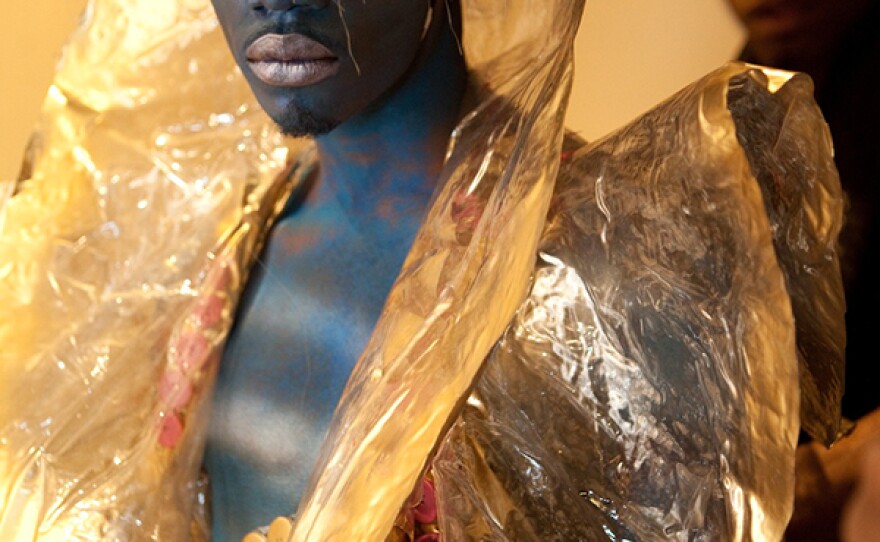In the late 1960s, black and latino members of the LGBTQ community were searching for a space of their own outside of white drag shows. Many of them started hosting balls, or pageants where they could perform in a series of competitions and be judged by their peers. Since then the ballroom scene has become a global phenomenon.
Gerard Gaskinhas been documenting the house ballroom scene for more than 20 years. His new book is “Legendary: Inside the House Ballroom Scene” (Center for Documentary Studies; 2013).
Host Frank Stasio talks with Gerard about the significance of the house ballroom scene. He notes that the power of the ball is in the space it provides for transformation.
“The ultimate power of the ballroom scene is the idea that you can come and play with… gender and sexuality in a way that they can’t really do outside of that space,” says Gerard. “It’s so important to see one minute, someone walking down the street normally; and the next minute they’re in high-heeled shoes, and stockings and a dress with a wig…it’s that carnivalistic style.”
There is no true equivalent of the house ballroom scenes for white participants. Drag shows are comparable to balls in someways, Gerard says, but drag shows use the structure of a man dressing as a woman, whereas balls seek a wide range of identities and performances.
“The ballroom scene is very, very different than a drag show. Drag Shows are like Ru Paul’s drag race, where it’s a male dressing up as a female and putting on a show. In some ways that’s how most of the white shows look,” notes Gerard. “A ball is almost all inclusive. There are femme queens, who we consider pre-op transsexuals; butch queens, who are basically gay men; butches, who are female to male transgender people, and then there are [cis-]women, and they have different categories for each one of those groups.”
When Gerard started attending balls and learning about ballroom culture, he didn’t start taking pictures immediately. He loved the energy of the balls and attended as many as he possibly could, but he had to gain a certain amount of trust before he could start documenting the scene.
“I didn’t take a picture for the first year! All I did was hang out...But I then did these portraits of the femme queens. Then they gave me easier access into the space,” says Gerard.
His photography spans two decades of balls across the country. But today, George still reflects on the close friendships he had with people involved in the 1990s New York scene.
When he first began he “wanted to take beautiful photographs that have a certain amount of dignity and respect.” His career progression formed bonds beyond the work. “Then you develop relationships, and they become friends of twenty years now,” he says.
Gerard Gaskin will be giving a book talk at the Center for Documentary Studies tonight at 6:30. Gerard has been awarded CDS's First Book Prize for Photography. An exhibit of his work will be on display at the center from now until February 2014.





